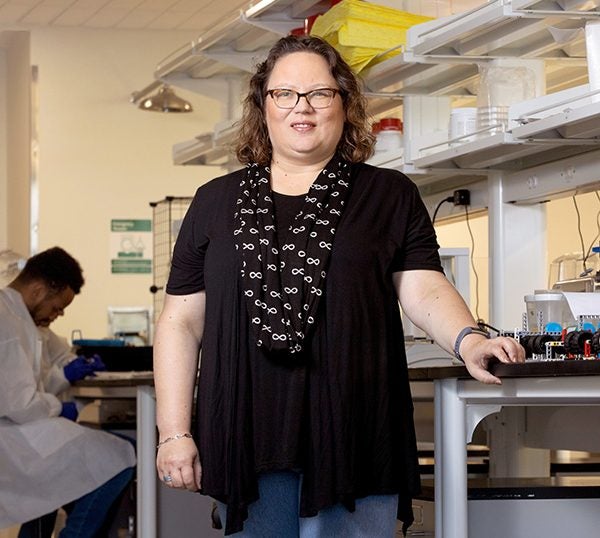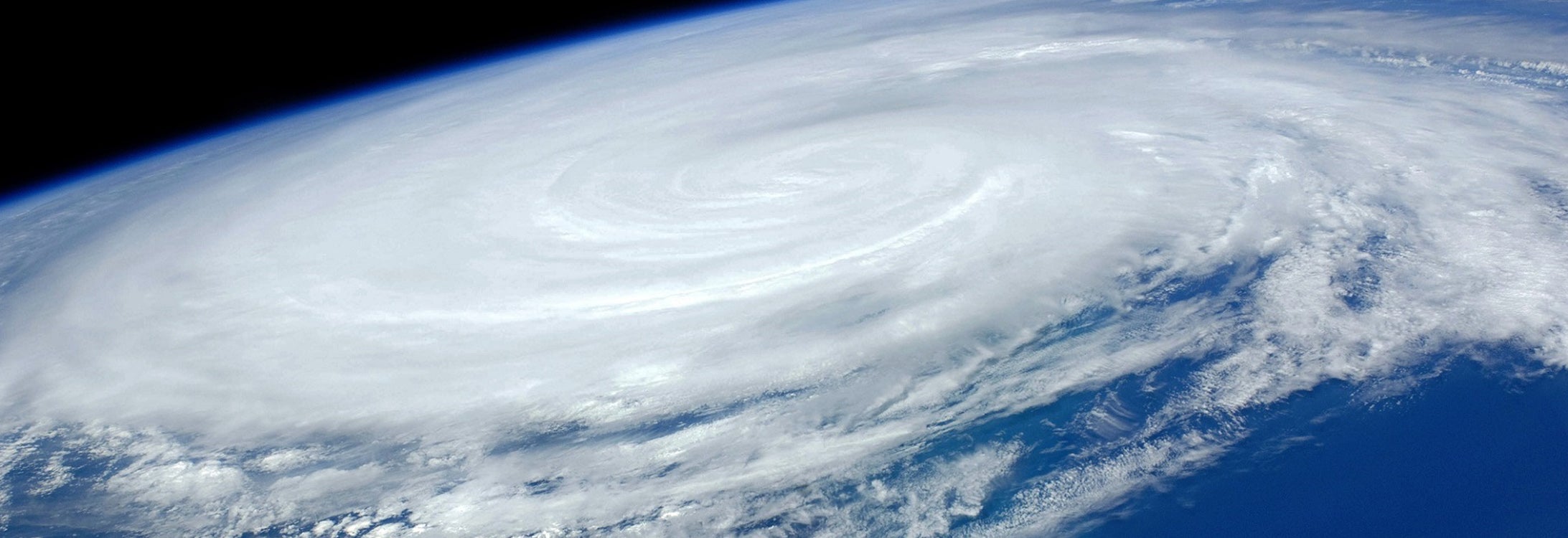PARENTAL PRESSURE
ECU researchers use model to examine link between hurricanes, premature births
As the Atlantic Coast prepares for another hurricane season, an old wives’ tale passed down through generations warns that when major storms make landfall, it’s not just the storm surge you should worry about — but a surge in births.
East Carolina University associate professor Michelle Oyen and undergraduate researcher Mackenzie Wheeler’s recent research paper, appearing in Frontiers in Physiology’s special issue on the role of fetal membranes in pregnancy and birth, explores this phenomenon.

Michelle Oyen, associate professor of biomedical engineering, developed a model that analyzes the strength of an expectant mother’s fetal membrane against external stress, including stress from low pressure weather events. The model helps researchers understand how fetal membranes may rupture when exposed to too much stress. (Photo by Rhett Butler)
The College of Engineering and Technology researchers used a model previously created by Oyen to develop a new mechanism that explains the potential correlation of premature births during weather-related events with large drops in barometric pressure.
The pair hypothesize that severe weather events that cause an extreme drop in pressure, like hurricanes or bomb cyclones, lead to premature fetal membrane rupture, also known as PROM, which causes preterm birth.
Anecdotal evidence has shown that these weather events may affect pregnancies, but the relationship between a drop in pressure and PROM has been brushed off as a coincidence by some in the medical community.
“We used a simple model to examine the stresses in the membrane as a function of changes in external barometric pressure,” Oyen said. “The reason this model is interesting is that it provides a mechanism by which this external change might be related to preterm birth. The anecdotal evidence that women are more likely to give birth early has been circulating for many years. Only recently has some serious work been done to try and validate this anecdotal evidence with data. Our model provides a mechanism to test that data.”
The pair’s model examines the strength of an expectant mother’s fetal membrane against external stress. Stress can rise during major drops of barometric pressure, like those experienced during Category 4 or 5 hurricanes.
“The model we used showed how the fetal membrane’s modeled stress varies depending on the barometric pressure and its gestational age,” Wheeler said. “When the stress is greater because of a storm with lower barometric pressure, this stress can exceed the membrane’s strength prior to term gestation, resulting in a preterm birth.”
After 30 weeks, the strength of a mother’s fetal membrane begins to decrease. When its strength is exceeded by external stress, it ruptures, causing premature birth. Late term pregnancies are often affected because the membrane is more likely to be exposed to ambient conditions due to the mother’s dilated cervix and loss of mucus plug.
“Earlier in the pregnancy the stress is small and the strengths are large,” Oyen said. “While there can be premature rupture of the membranes, it is often due to another factor such as an infection, cervical insufficiency or factors like maternal smoking. The strength of the membrane seems to hit a peak around 30 weeks gestation and then decreases until full term, so it is only later in the pregnancy that these two numbers (strength and stress) become close to each other.”
Since 2016, the Atlantic Coast has experienced eight Category 4 or 5 storms, including hurricanes Matthew and Florence, which struck landfall in North Carolina as Category 1 hurricanes. Oyen said that the frequency of storms makes the state a perfect spot to collect data on this phenomenon.
“Eastern North Carolina is highly susceptible to hurricanes,” Wheeler said. “It serves as a great candidate for collecting data compared to parts of the country that are less likely to have a hurricane make landfall. The March of Dimes in the United States records maternal and infant health and birth rates … ironically, the states with higher susceptibility to hurricanes were recorded as having the highest preterm birth rates.
“Additionally, hurricanes can cause numerous health risks for the baby, such as the newborn having to rely on a ventilator. These risk factors are higher in the state relative to any other place.”
While some in the medical community have been skeptical of this relationship, Oyen hopes that her engineering background will help bridge the divide between the different fields of science.
“I think the medical community has been dismissive of this possible link because of the huge gulf that exists between the biological and physical sciences,” Oyen said. “My field (biomedical engineering) aims to help bridge this gap. There is no question that there are other biological stresses involved with hurricanes and evacuations that could be a factor, but this provides one very specific mechanism for what could be contributing in premature membrane rupture in bad weather.”
As the Southeast enters a new hurricane season, Oyen and Wheeler have advice for mothers expecting this season: put together an emergency weather plan.
“It’s tricky,” Oyen said. “You don’t want to see women checking themselves into hospitals prior to storms just as a precaution, although anecdotally this is something that seems to be happening. Communication outages seem to be another big risk, since the ability to contact a doctor or midwife may be affected by cell phone outages.”
The 2020 Atlantic hurricane season officially began June 1.
